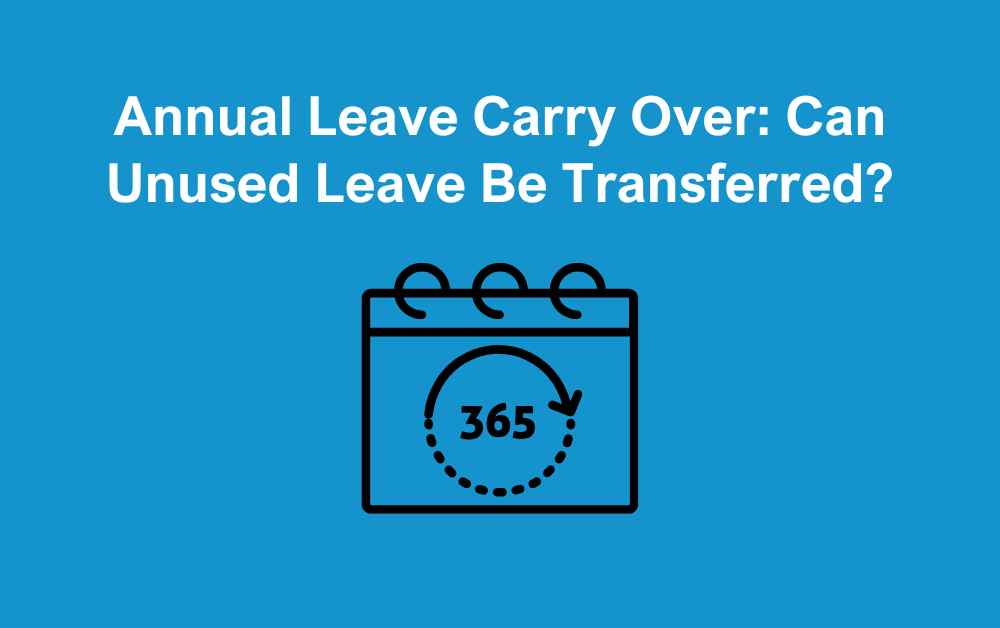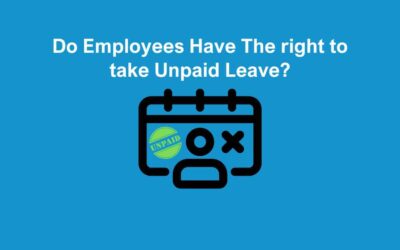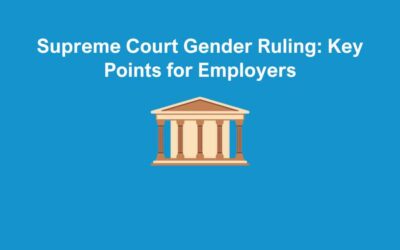Annual leave is a fundamental aspect of employee wellbeing, providing time for rest, relaxation, and recovery. However, a common question arises in many workplaces: can employees carry over unused statutory annual leave to the next holiday year? Understanding the legal framework and best practices surrounding annual leave carry over can ensure compliance and enhance employee satisfaction.
As part of Breathe HR’s annual holiday report, they found that only 35% of UK workers use all their holiday days. This alarming trend highlights an unused holiday epidemic, where many employees forego their entitled rest periods, leading to increased risks of burnout. Employers must recognise the importance of encouraging employees to take their annual leave to maintain a healthy and productive workforce. Addressing this issue is crucial not only for compliance but for fostering long-term employee wellbeing.
In this blog, we will explore the ins and outs of annual leave carry over, delving into the key considerations for employers and employees alike.
What Is Statutory Annual Leave?
In the UK, employees are entitled to a minimum of 28 days of annual leave each year. This entitlement includes public holidays but is prorated for part-time workers. Statutory annual leave is governed by the Working Time Regulations 1998, which set out the rules and rights surrounding paid holiday entitlement.
Understanding the statutory framework is crucial for addressing queries about carrying over unused leave. Employers must balance legal compliance with fostering a positive work environment that respects employees’ need for time off.
The Rules on Carrying Over Statutory Annual Leave
Under normal circumstances, statutory annual leave must be taken within the holiday year it relates to. However, there are exceptions to this rule, and the legal framework provides some flexibility for annual leave carry over in certain situations. Here are the main scenarios where annual leave carry over may apply:
1. Inability to Take Leave Due to Long-Term Illness
Employees unable to take their annual leave due to long-term sick leave can carry over unused leave into the next holiday year. This is supported by case law, which highlights that employees should not lose their entitlement to leave if they have been prevented from taking it due to health issues.
2. Parental Leave and Maternity Leave
Employees on maternity leave, adoption leave, or parental leave are entitled to carry over unused statutory annual leave. This ensures they do not lose their entitlement to holiday while on extended leave for family reasons.
Practical Tip for Employers
Ensure your HR system accurately tracks leave entitlements for employees on parental leave. Communicate with employees about their accrued leave and how it can be used upon their return.
3. There’s a relevant agreement in place that allows it
Employers should allow annual leave carry over if there’s an agreement in place. A relevant agreement may include:
- A workforce agreement made between an employer and employee representatives
- A collective agreement made between a recognised trade union and an employer
- A legally enforceable agreement between an employee and employer, such as an employee handbook or employment contract
If no relevant agreement exists, employees must take their statutory holiday entitlement of 5.6 weeks during the leave year, unless a valid reason prevents them from doing so. For instance, this might occur if they are on long-term sick leave or maternity leave.
Practical Tip for Employers
Maintain clear policies and procedures for handling sick leave and annual leave requests. Require employees to notify you as soon as possible if they are unable to take their leave due to illness.
Can Employers Refuse Annual Leave Carry Over?
While employers have a degree of discretion over non-statutory leave, they cannot refuse the carry over of statutory leave in cases where the law explicitly permits it. For example, denying leave carry over to an employee on long-term sick leave could result in legal challenges and potential tribunal claims.
Employers should ensure their policies align with legal requirements and are applied consistently. Clear communication about annual leave entitlements and policies can help prevent misunderstandings and disputes.
Enhanced Holiday Entitlement
Some employees are entitled to more than the legal minimum of 5.6 weeks of annual leave. This additional leave is often referred to as “enhanced” or “contractual” holiday entitlement.
The terms of their employment contract should specify whether they are allowed to carry over any unused holiday from one leave year to the next and, if so, how much of this entitlement can be carried over. It is important for both employees and employers to be clear on these terms to avoid any misunderstandings or disputes regarding holiday entitlement and carryover provisions.
Best Practices for Managing Annual Leave Carry Over
To effectively manage annual leave carry over, employers should implement the following best practices:
1. Set Clear Policies
A well-documented annual leave policy is essential. Include details about how carry over is handled, any limitations on the amount of leave that can be carried over, and the time frame for using carried-over leave.
Example Policy Statement
“Employees unable to take their statutory annual leave due to illness or other valid reasons may carry over unused leave into the next holiday year. Carried-over leave must be used within six months unless otherwise agreed.”
2. Monitor Leave Usage
Encourage employees to plan their leave throughout the year. Regularly remind staff of their remaining entitlement and the importance of taking time off.
Benefits of Monitoring
- Reduces last-minute holiday requests
- Minimises the risk of burnout
- Ensures compliance with legal requirements
3. Use HR Technology
HR software can simplify tracking leave entitlements, carry over, and usage. Automated reminders and reporting tools ensure both employees and managers are aware of upcoming deadlines for using annual leave. We are Breathe HR Gold partners and would be more than happy to discuss the benefits with you and get you set up with a free trial.
4. Foster a Positive Culture Around Time Off
Promote a workplace culture that values rest and recovery. Encourage employees to take their leave, highlighting the benefits for mental health and productivity.
Communication Tip
Include regular reminders in newsletters or team meetings about the importance of annual leave and how to request it.
FAQs About Annual Leave Carry Over
Can part-time employees carry over annual leave?
Yes, part-time employees have the same rights to carry over unused statutory leave under the relevant circumstances. Their entitlement is prorated based on their working hours.
How much leave can be carried over?
The amount of leave that can be carried over depends on the reason for the carry over. For example, employees unable to take leave due to illness may carry over their full entitlement, while other policies may set limits.
What happens to carried-over leave if an employee resigns?
If an employee resigns, they are entitled to payment for any unused statutory leave, including any carried-over leave.
Can employers impose deadlines on using carried-over leave?
Yes, employers can set reasonable deadlines for using carried-over leave, as long as they comply with legal requirements.
Conclusion
Understanding the rules and best practices surrounding annual leave carry over is essential for employers and employees alike. By ensuring compliance with legal obligations and fostering a supportive culture, businesses can manage leave effectively while prioritising employee wellbeing.
Employers should regularly review and update their leave policies, leveraging HR technology to streamline processes. Clear communication, proactive monitoring, and a positive approach to time off will go a long way in creating a healthy and productive workplace.
If you have questions about annual leave carry over or need support updating your policies, get in touch with our HR experts. Together, we can ensure your business is compliant and your employees’ rights are protected.







